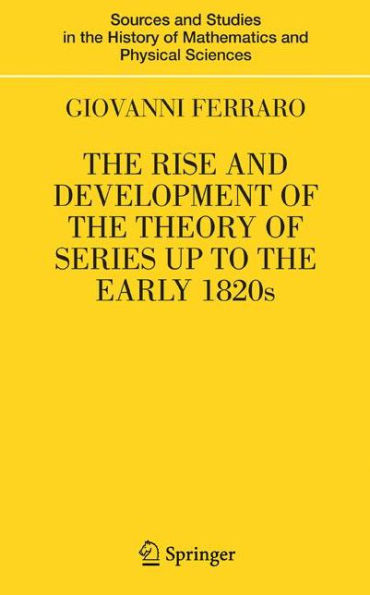5
1
9780387734675



The Rise and Development of the Theory of Series up to the Early 1820s / Edition 1 available in Hardcover, Paperback

The Rise and Development of the Theory of Series up to the Early 1820s / Edition 1
- ISBN-10:
- 0387734678
- ISBN-13:
- 9780387734675
- Pub. Date:
- 12/18/2007
- Publisher:
- Springer New York
- ISBN-10:
- 0387734678
- ISBN-13:
- 9780387734675
- Pub. Date:
- 12/18/2007
- Publisher:
- Springer New York

The Rise and Development of the Theory of Series up to the Early 1820s / Edition 1
$109.99
Current price is , Original price is $109.99. You
109.99
In Stock

Product Details
| ISBN-13: | 9780387734675 |
|---|---|
| Publisher: | Springer New York |
| Publication date: | 12/18/2007 |
| Series: | Sources and Studies in the History of Mathematics and Physical Sciences |
| Edition description: | 2008 |
| Pages: | 392 |
| Product dimensions: | 6.10(w) x 9.25(h) x (d) |
From the B&N Reads Blog
